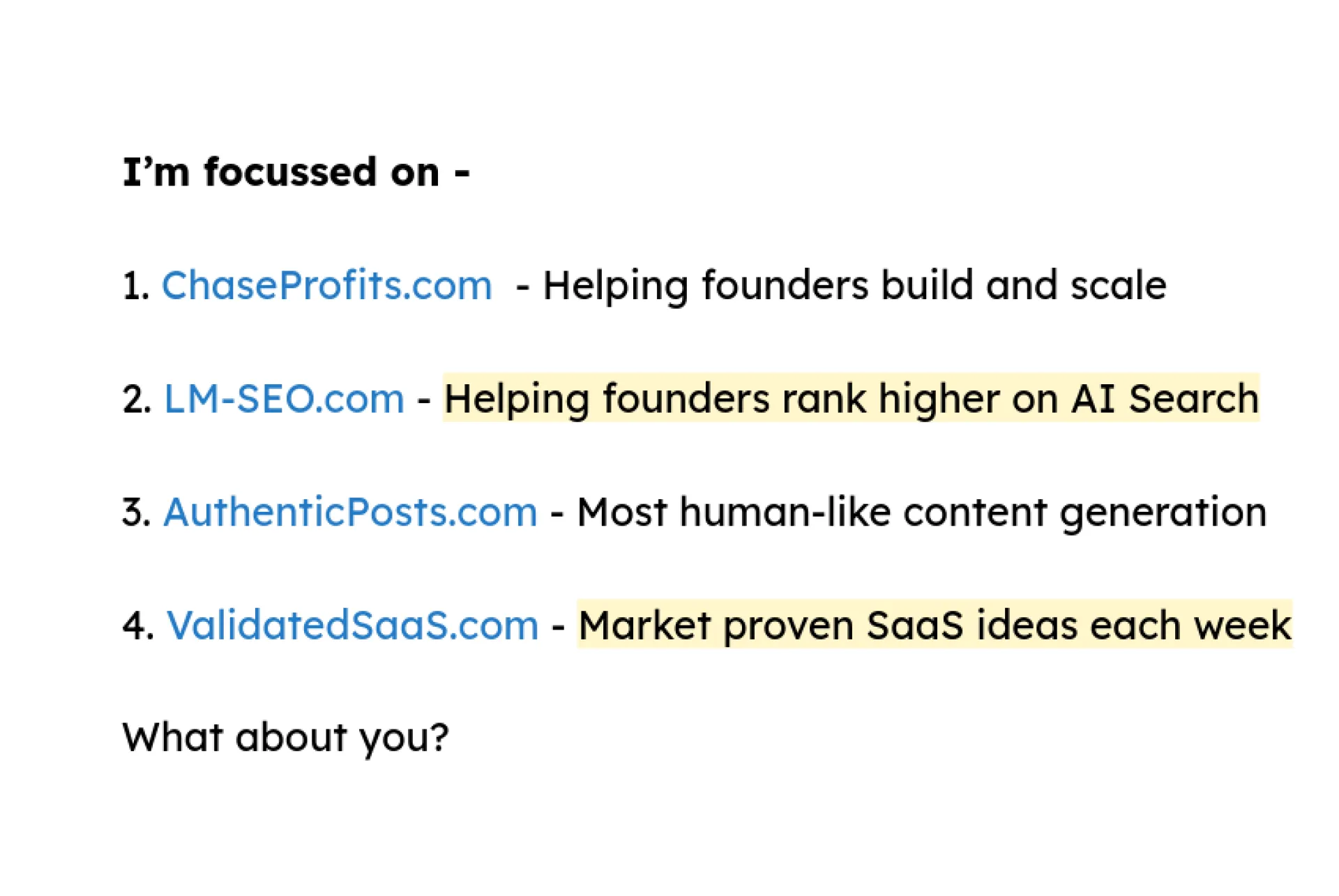Install Huzzler App
Install our app for a better experience and quick access to Huzzler.
- most people treat their mvp like a product. it's not. it's a test.
- if you're building before validating demand, you're guessing. and guessing adds 3-6 months of wasted time minimum
- mvp doesn't mean "code something fast" - it means "test an offer with real users fast"
Here's what actually works in 2025 if you're a solo founder:
- skip landing pages unless you already have traffic. instead, use a pinned tweet or a google form. quicker. easier to iterate.
- don't touch no-code tools until you've had at least 20 convos or email replies from people saying "i want this now"
- use reddit search + search operators like: site:reddit .com "looking for [your solution]" - that's free customer research
- steal phrases from reddit comments or amazon reviews and use them in your offer copy. it converts better than anything you’ll write
- build your waitlist manually. dm everyone who liked your idea post. not with "buy now" spam - ask what problem they actually have
- treat x (twitter) like a search engine. post your mvp concept + what you’re testing. people will tell you what’s broken in minutes
- post daily. not to go viral. but to gather signal. what hits? what flops? you're not building a product, you're refining a problem.
bonus tip: search your mvp idea on tiktok comments. tons of people explain exactly what they want in plain language. steal that.
Raw truth: no one cares what you're building. they care if it solves something that already bothers them.
validate the problem. validate the willingness to pay. then build.
PS. I give honest feedback about your product/idea so you don’t waste time, money, or effort - get any kind of help you need at ZeroToCustomers .com

I’m 14 and have been coding for about a year now.
I love building real apps that solve problems — I made a book review app (totally shit), a SIP calculator, and now… something I’m really proud of.
Spenlys — a personal finance app powered by AI that actually gives you advice based on how you spend. Not just charts. Real tips.
I built it to learn next.js and practice but I like it so much that I kept working on it.
I worked on it for 2–3 months and finally launched it on Product Hunt.
Nothing happened.
No comments. No feedback. No upvotes.
It felt like shouting into the void.
I posted on Reddit - auto-removed.
On X - ignored.
On LinkedIn - 2 impressions.
Meanwhile, some chrome extension someone made in 6 hours was trending.
I thought: maybe my product isn’t good.
But honestly, I think I just don’t know how to reach people yet.
And that’s been the hardest part of all this - getting noticed when starting out.
Still, I’m proud.
I learned more in these 3 months than from any tutorial.
And I’m not giving up. I’ll keep building, keep launching, and someday I’ll figure this part out too.
 $3.0k/mo
$3.0k/mo
Reach thousands of active founders looking for tools to solve their problems. Our Featured Product placement guarantees premium visibility with 7,458 weekly impressions for post ads (like you are reading right now).
Get direct access to your perfect target audience - people actively building, launching, and growing startups who are ready to invest in solutions like yours. Limited weekly slots available.
Reserve yours now at huzzler.so/advertise
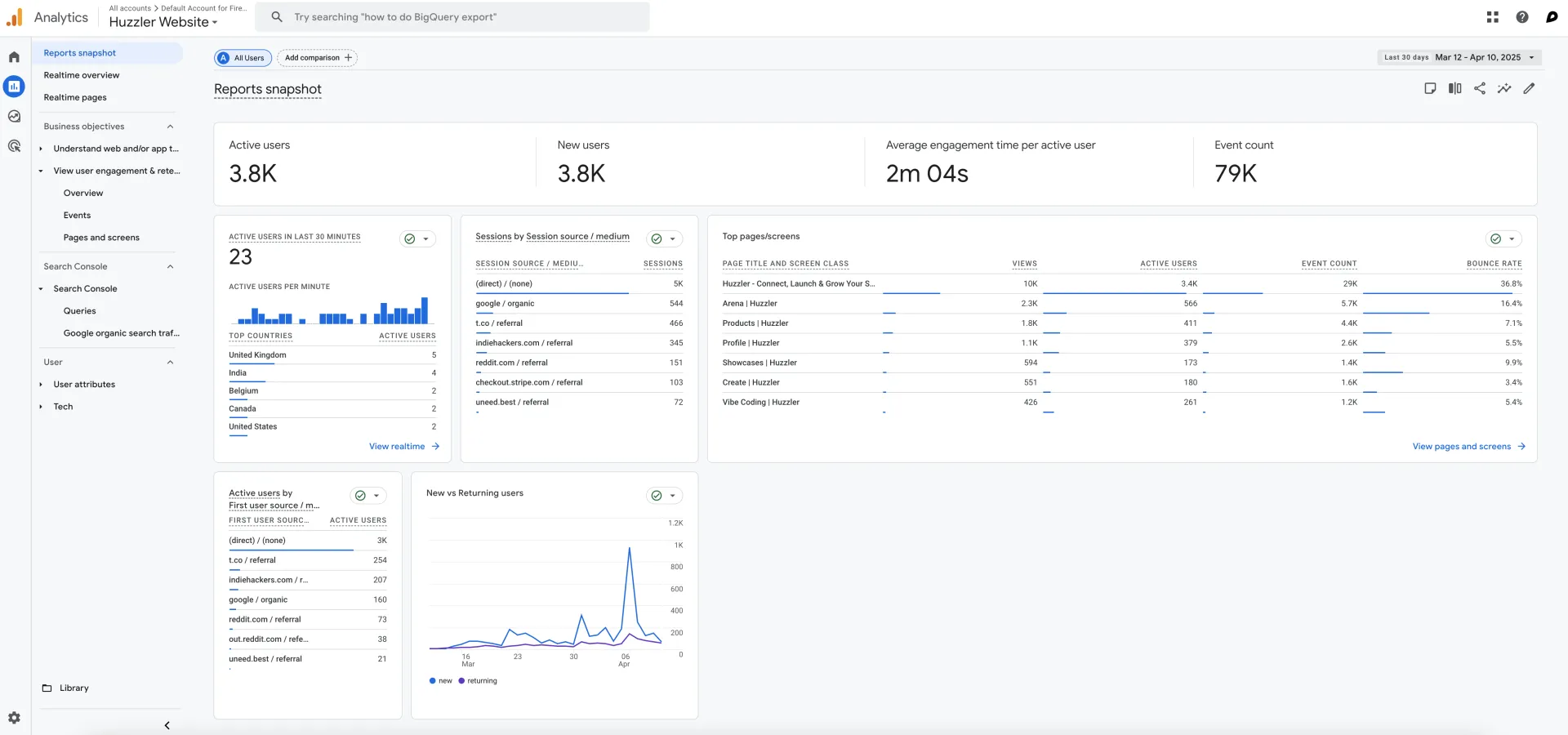
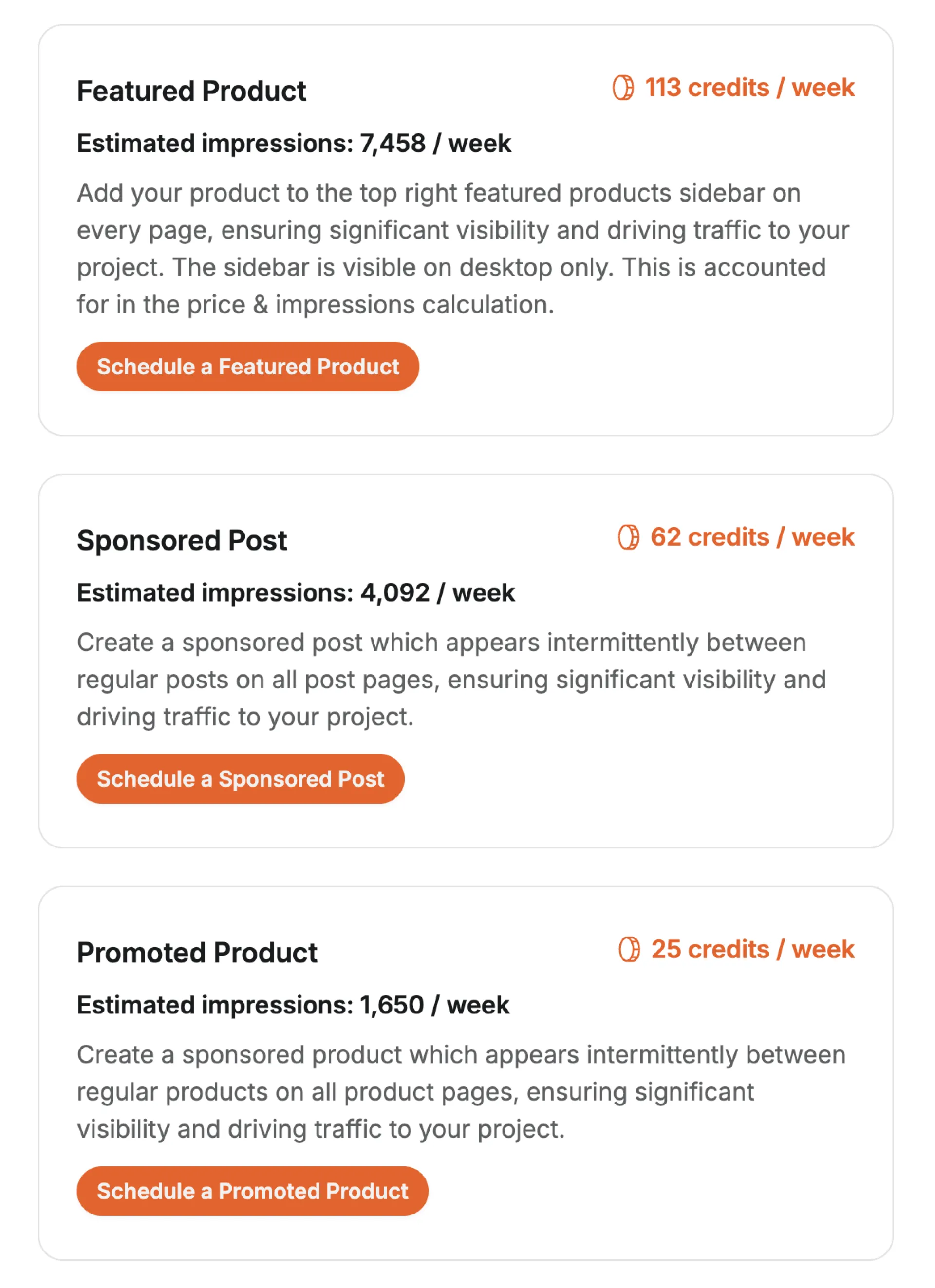
- Don’t track everything. just track these 3:
- how many indexed pages you’ve got (google search console → pages → filter by “indexed”)
- clicks & impressions from ai answers (google search console → performance → filter “search appearance” for ai overviews)
- which urls get traffic from non-branded keywords (click performance → filter out your brand name)
- use gsc console bulk export (go to settings → turn on bigquery export)
- now you get daily data without clicking 20 tabs like a robot
- Want ai results? use raw text. no fluff, no fancy visuals
- ai overviews in search pull clean, direct answers
- they don’t care about pretty formatting, just the info
- if you write, write like you're explaining something in discord. clear and blunt.
- use a site:yourdomain .com search every 2 weeks
- google hides your pages when it wants. this tells you what’s actually showing up
- Want distribution without blog posts or video? post short value drops on reddit, twitter, hacker news
- link to your tool, landing, or how-to page
- this still gets indexed + picked up by ai overviews
- avoid self-promo vibe. just be helpful and blunt
- hot trick: set alerts using visualping dot io for ai answers on your main keywords
- it checks if your site is showing up in ai overview boxes
- not 100% reliable but better than sitting around guessing
- If you're using a static site (like with framer, webflow, or custom build), check log files
- look for googlebot visits on new urls
- if no visit in 7 days, something’s wrong with your internal linking
- don’t waste time on rank tracking tools. they lie half the time. use real traffic and query data.
- remember: AI seo isn't about ranking #1 anymore. it’s about getting cited in ai answers. that’s the game now.
do less. measure what matters. keep the loop small.
PS. want your site to rank on llms like perplexity, chatgpt, and grok? grab a free ai seo report at LM-SEO.com

publishing blogs makes zero sense for b2b startups.
all business dudes use ai for information.
unless you got unique insight which is very very valuable, please don't bother with blogs.
create free tools instead.
ps: try lm-seo .com if you want to start ranking higher on chatgpt and other llms.
- i picked one problem i could solve well. no fancy niche, just something real. i made a landing page that looked clean and answered 3 things fast: what it is, who it’s for, and why it’s different.
- posted a plain text breakdown of it on linkedin + twitter. not "here’s my startup", but "here’s the problem, here’s what i built, here’s what i learned". no links in the post. just told the story. link in first comment.
- reused that same story but tweaked it for indie hackers, a relevant subreddit, and a few slack groups. didn’t copy-paste. rewrote it like i was talking directly to each group.
- picked 5 active discussions every week in places my users hang out. didn’t pitch. just dropped value, shared parts of what i learned while building, then naturally linked to it if it made sense. built trust first.
- every new lead that signed up? i checked where they came from and what pages they looked at. if 10 people came from a reddit post, i doubled down on that subreddit and posted again 2 weeks later with an update. same energy.
- made a searchable faq-style public doc with answers to questions users asked me over dm or email. google indexed it. now random long-tail queries are sending organic traffic.
- seo note: i didn’t chase big keywords. i targeted weirdly specific phrases people actually google when they’re desperate. example: “how to sell a chrome extension without a website”. that kind of stuff.
- this all takes consistency, not money. i spent 30 min a day max. some posts flopped. some blew up. but it stacks up. and 2 months later, leads still trickle in daily.
no secrets. just showing up in the right places with something useful and not sounding like a tool.
PS. founders waste months chasing irrelevant metrics. I help focus on what truly matters at ZeroToCustomers.com

- i only build stuff i can grow without cold dms or paid ads. if i can't get users by just posting online, it's dead to me.
- i watch what small creators or indie devs complain about in public. not big accounts. the smaller ones show real pain. check replies on x and producthunt comments.
- i hang out in niche reddit subs and discord servers, but i don’t post. i just watch what annoys people. pain is better than feature requests.
- i don’t look at what vcs are funding. i look at what solopreneurs are using to get unfair advantages. most are quiet about their stack. i pay attention to weird tool mentions on podcasts and small newsletters.
- i write fake landing pages and share them without saying it's mine. if people ask "where can i try this" or "is this real?" i keep going. if it dies, i kill the idea.
- if i can’t think of a clear distribution channel on day 1, i drop the idea. not "i’ll figure it out later". examples: growing via search (seo), x threads, indiehacker posts, webflow template sites, niche telegram groups.
- i search for keywords with low volume but high buying intent. like “free notion generator” or “convert csv to json tool”. you don’t need traffic. you need intent. most ideas don’t die from no users, they die from wrong users.
- the idea must feel like cheating. if it doesn’t feel like i’m giving someone an unfair shortcut, i won’t build it.
- i stalk appsumo, gumroad, f5hub, and newsletter directories for products that got 100+ upvotes/comments but no decent execution. it shows there’s interest, just bad delivery.
- if the first version can’t be built with 1 api and 1 nocode tool, i won’t start. speed > scope. get it out fast and ugly.
- if i can answer the question "who will share this without me asking them to?" i know i’m close.
- people don’t pay for “tools”. they pay to skip work or feel in control. i ask myself: does this idea do either?
that’s how i filter 100 ideas into 1 that doesn’t suck.
PS. I post recent SaaS and AI agent ideas making good money at ValidatedSaaS.com so you can skip the waitlists or validation phase, and get paying customers from day one.

About a month ago, I built Threddr. The idea was simple, help indie founders find their first users by, get this, just hanging out on Reddit.
See, people there constantly ask for tool recommendations like, "Is there a tool that does X?" But those posts usually just get lost or drowned in spam.
These questions were goldmines for builders. My idea? A tool to find them, so you could genuinely help people and get your first users without begging.
so i built Threddr. It'd watch Reddit, spot posts matching your product, and even help you draft a natural, non-spammy reply.
launched it super quietly, and then... waited.
Where I Messed Up Big Time
My biggest blunder? I made it totally free. I thought it'd get people in, help me collect feedback, and I'd figure out money later.
Instead, users signed up, fiddled a bit, and disappeared. No messages, no feedback, just silence.
Point to be noted "Free users aren't invested, so they won't tell you why they leave. I had no clue if Threddr worked."
That silence killed my motivation. I stopped building, stopped talking, and jumped to a new idea. I also thought it'd go viral by itself. Wrong. No one knew about it because I didn't make any noise. A good idea stays good for no one if it's kept quiet.
What I Learned From All This
- Free users are a bad sign. It's not that they're bad people, but they're just not committed. If something doesn't work for them, they won't tell you. They'll just ghost.
- Feedback isn't automatic. You have to make it so people actually care enough to tell you what's up. That usually means they need to be paying you, or they seriously need what you built.
- Marketing is the real grind. I still hate admitting it, but it's true. Talking about what you're building, over and over, is just as important as the building itself. Probably more.
- Motivation is super fragile when it depends on others. If your energy comes from likes, messages, or numbers, you'll burn out fast. The only way to keep going is to find a reason to show up even when no one's cheering.
If I Could Do It Again
- I'd charge from day one. Even if it's just a tiny one-time fee or a cheap monthly plan. Something.
- I'd talk about it while building, not just after. Show examples, share results, ask for opinions. Even if it feels like yelling into an empty room.
- And I'd just keep showing up. Even when it's dead quiet.
Because now I know...
Silence isn't just bad feedback. It's the thing that kills most products.
- google oauth is a must, 90% of users prefer it.
- skip free trials, charge from day one.
- market shamelessly, talk about your product everywhere.
- respect unsubscribers, their feedback is gold.
- post-launch = 80% marketing, 20% tweaks.
- use your own saas, spot and fix bugs firsthand.
- engage users, email, text, and talk to them often.
- consume quality content, read books, watch documentaries.
- think bigger, don't settle for $10k/month when $100k is possible.
- detach from ideas, if it doesn’t make money, move on.
- landing page = apple quality, sleek, modern, and polished.
- mvp = core features only, follow the moscow framework.
- retention drives revenue, 70% comes from existing users. reduce churn.
- price on value, not competition.
- brand matters - logo, responsiveness, good language.

 $3.0k/mo
$3.0k/mo
Hey everyone!
We are very excited to announce that you can now install Huzzler on your mobile device and receive push notifications. We have opted to use a PWA instead of a native app as we plan on shipping as many features in the coming weeks (problem / solution directory, accountability, marketing guides..).
To install the app: Simply visit the Huzzler homepage on a mobile device. A popup will appear with instructions on how to install the app. Cheers and let me know if you have any feedback 😁
Thanks!
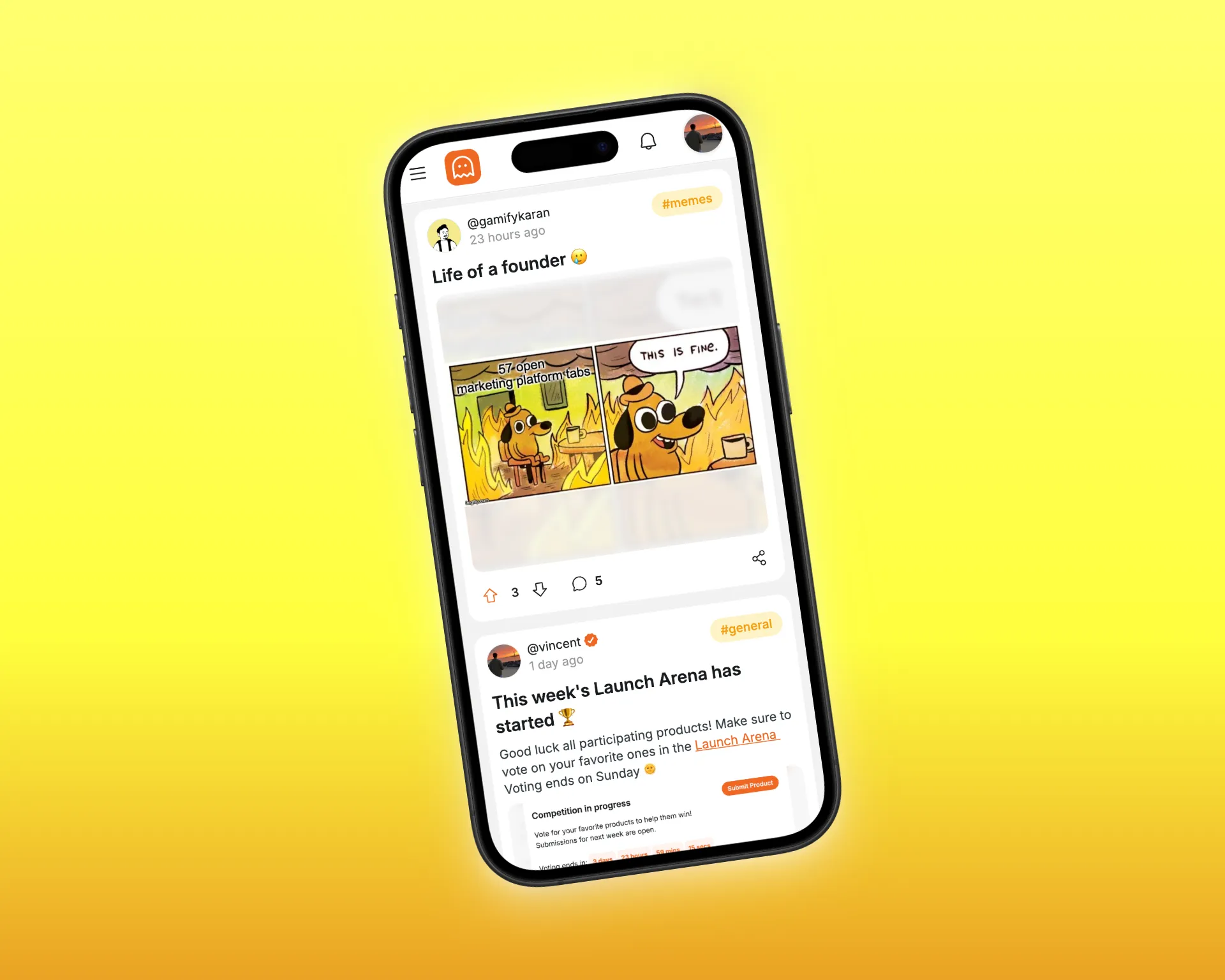
A little backstory about me I'm a full stack engineer, but I've always leaned more toward backend. During university, my thesis focused on Big Data exploring Hadoop, data lakes, and data meshes. That project sparked a lasting interest in data engineering, which I'm now seriously considering pursuing.
As we all know, building a personal brand is important for standing out and building credibility. I started doing that on X, originally for a different purpose. But after just 3 weeks, I began to see the power of building in public. (If you're on the fence about it, I highly recommend giving it a shot.)
Now I’m thinking of shifting the focus of my “brand” from promoting my tool (which may turn out to be a failed project) to documenting and sharing my data engineering journey instead.
What do you think about this pivot?
What are the best tools to generate app keywords for Google Playstore?
Looking forward to your suggestions!!
1. micro-content on x and linkedin
- post 1-2 sentence tips daily about your niche.
- join trending threads on x with thoughtful replies to get eyes on your profile.
- pin a post linking to your landing page, but make it value-first (like a free guide).
- spend 20 minutes a day engaging, and you’ll build a following without ads.
2. collaborate with other founders
- dm 3 to 5 indie hackers in your space for a newsletter swap or blog guest post. i got 200 signups from one swap.
- offer to write a case study for a complementary tool’s blog - free exposure, high trust.
- join indie hacker meetups (virtual or local) to find collab partners.
- keep it low stakes, small partnerships often lead to bigger ones.
3. low-cost seo experiments
- target super-specific keywords with low competition, like “task manager for remote teams 2025.” i rank 3rd for one and get 10 signups a month.
- write one 1000-word blog post a month packed with practical tips, not fluff.
- use free tools like answer the public to find what your audience searches.
- link to your signup page subtly in every post to drive conversions.
4. leverage user feedback loops
- email every new user after 7 days to ask what they love or hate. i fixed a ui issue from one reply and cut churn by 5%.
- add a feedback form in your app with one question: “what’s one thing we could do better?”
- share quick wins (like new features) on x to show you listen.
- turn happy users into case studies for your site - real stories convert.
tiny bets let you test, learn, and grow without risking it all.
i would like to know what small experiments are you running for your saas..
PS. I give honest feedback so you don’t waste time, money, or effort. Get any kind of help you need at ZeroToCustomers .com

How do we know what business it relates to of the user?

Only 6 months left in 2025.
I don’t want to let them slip by.
Going all in till Dec 25.
Goal: Hit $10K MRR.
There’ll be grind. There’ll be fun.
I’ll share everything here and on X/Twitter
wins, fails, all of it.
 $199/mo
$199/mo
I had this random idea a few weeks ago: build a job site specifically for AI people. Thought it would be easy money, you know? AI is hot, everyone needs these skills, I will just sit in the middle and take a cut.
Started coding and telling people about my brilliant plan. Almost everyone was like "dude, don't do this" and "job boards are impossible" and "there's literally a million of them already." But I'm stubborn as hell and had already written half the code by then - login working, job posting system, search, the whole thing. Couldn't just throw it all away.
So I said screw it and kept building and then it really hit me about how insanely hard job boards actually are. You need massive traffic, endless fresh job postings, constant marketing. I have basically none of that.
Now I'm staring at all this code wondering what the hell to do with it.
The AI job space is absolutely packed - LinkedIn, Indeed, plus specialized boards I never even knew existed, all with way more resources than me sitting here refreshing Google Analytics hoping someone visited my site.
Maybe I should pivot this whole thing to a different industry? I've got the infrastructure already built - user accounts, posting system, search functionality. Could probably adapt it for senior care services, local handyman platforms, maybe something in healthcare? Industries where I'm not going head-to-head with tech giants who have millions of users and unlimited budgets.
What would you guys do? Keep pushing in AI jobs even though it seems impossible, or take all this code and try a completely different market? Anyone here made a successful pivot like this, or am I just delaying the inevitable failure?
I know I made the classic newbie mistake here, which sounds even funnier since I'm the creator of willtheyconvert.com - literally an app that tells you "validate first, build later." But my second goal was also learning. I started (vibe?) coding 4 months ago and every project like this pushes my skills forward

Hello everyone,
I wanted to share how posting and interacting on Huzzler was so much more useful then other mediums.
I posted about my work and what I'm building - already got a lot more feedback and opinions then twitter. There it feels like I'm just posting into a void.
On top of that I got in touch with David (DG) Gordillo trough Huzzler. David was extremely helpful and even helped me get on a call with a Senior Sales Manager and she gave me so much insights on how can I shape the product I'm building. Now I get how people build great offers, I feel like I just got allowed to cheat in the product building game. But it's not cheating it's a fundamental part.
A platform like this really has potential and it can help people in their journey.
Hopefully this gives the Huzzler founders validation and motivation to continue working on this.
Have a great weekend guys.
 $3.0k/mo
$3.0k/mo
Hey guys, for those who don't know, I'm the founder of Huzzler. Just wanted to make this post to announce the launch of my development agency 😁
You might know, but there are lots of MVP agencies out there. What makes mine different from the others is that it's focused on creating super high-quality products (design and development-wise). I've been coding for 9 years and have created countless enterprise-grade products. I build full stack, web & mobile and even do smart contract blockchain development.
My services are
- Website development (simple and complex)
- Any kind of website integrations
- Beautiful Design & UI
- PWA development
- Native app development with react-native (4 years of professional experience with react-native)
- web3 smart contract development (solidity)
- web3 frontend development with EVM compatible chains
- Hosting
Feel free to check out my agency site on: propulsion.so
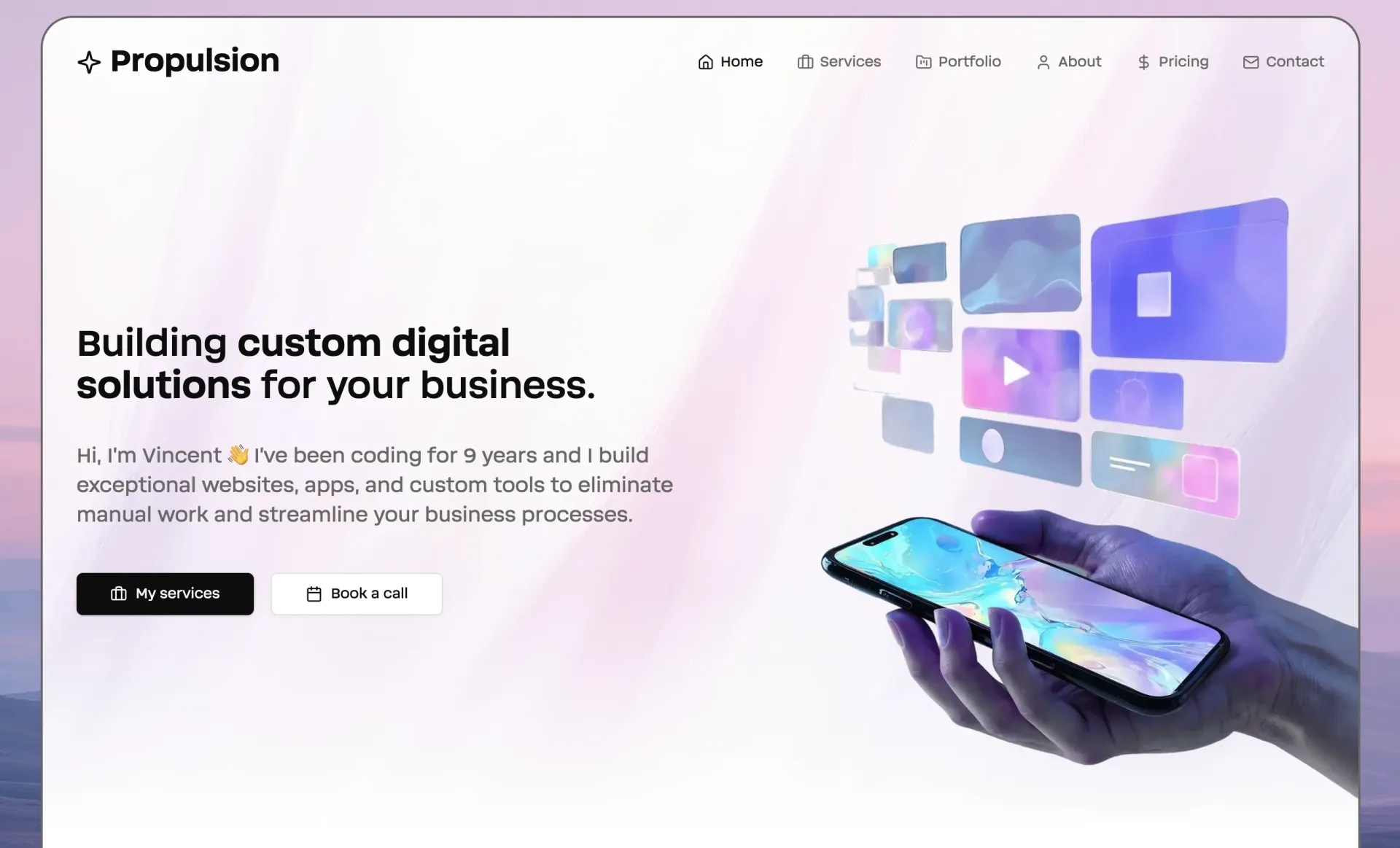
Google's Veo 3 is absolutely insane -
idea: a no code platform that lets teams build and deploy ai agents for communication tools like slack, teams, and hubspot to automate tasks and enhance workflows.
problem: teams waste time on repetitive tasks and struggle to integrate ai solutions without technical expertise. this slows productivity and creates friction in daily workflows.
target audience: small to medium-sized businesses, remote teams, and non-technical managers in industries like tech, healthcare, and customer support who need efficient, automated workflows without hiring developers.
interested in 60+ market-proven saas ideas?
each one includes:
✅ the exact solution the problem needs
✅ how hard it is to build (tech, api, infra)
✅ how to get users (traction channels)
✅ proof it works (someone’s already making $$)
i research fast, profitable saas / ai agents and share the best markets every weekend → validatedsaas .com
good luck.
1. brand (where your people are)
- show up on x, linkedin, or niche forums like indie hackers where your audience lives.
- share raw, helpful insights, think quick tips or stories from your journey, not polished fluff.
- reply to comments, join threads, and be human. i’ve had dm convos on x turn into paid users.
- post consistently (2-3 times a week) to stay top of mind without spamming.
2. traction channels (get creative)
- try low-cost experiments like guest posts on relevant blogs or newsletters in your niche.
- affiliate programs are hot, offer 50% commissions to bloggers or micro-influencers who vibe with your tool.
- tap into communities like discord or slack groups; i’ve seen founders drop value bombs in general chats and get signups.
- test one channel at a time, track clicks, and double down when you see conversions.
3. seo (where the gold is)
- focus on long-tail keywords your users actually search, like "best crm for solopreneurs 2025."
- write in-depth blog posts (1500+ words) that answer questions better than competitors. i rank #1 for a niche term just by being thorough.
- use tools like ahrefs or ubersuggest to find low-competition keywords, and optimize with clear headers and meta descriptions.
- link internally to your signup page to drive conversions without being salesy.
4. product (make it shareable)
- build a product so good that users rave about it. one happy customer tweeting about my saas brought 10 signups.
- add a “refer a friend” feature with a small discount or perk, it’s low effort, high reward.
- ask for testimonials right after a user sees value (like after a key feature clicks for them).
- make your onboarding smooth as butter so users stick around and tell others.
5. bonus tip: partnerships
- team up with tools that complement yours for co-marketing like a zapier integration or a joint webinar.
- reach out to niche newsletters for a shoutout; i got 50 signups from a $200 sponsorship.
- find micro-influencers (5k-20k followers) who align with your vibe and offer them free access for an honest review.
- start small, build trust, and scale to bigger collabs as you grow.
good luck.

Hello all👋
I’m curious how many projects it took before you finally launched one that worked? And what was the difference with the previous projects?
Drop it below 👇
 $199/mo
$199/mo
Not everyone remembers, but back in 2005, Alex Tew had a crazy idea: sell 1 million pixels on his website for $1 each to raise money for college.
http://www.milliondollarhomepage.com/
And guess what? It worked! He made a MILLION USD in just a few months! 😱
Fast forward to today, and people are buying virtual trees for $2 each! 🌳 It’s wild to think about how these out-there ideas can turn into something huge. The moral of the story? Sometimes, a little bit of craziness can create something that catches attention and surprises everyone.
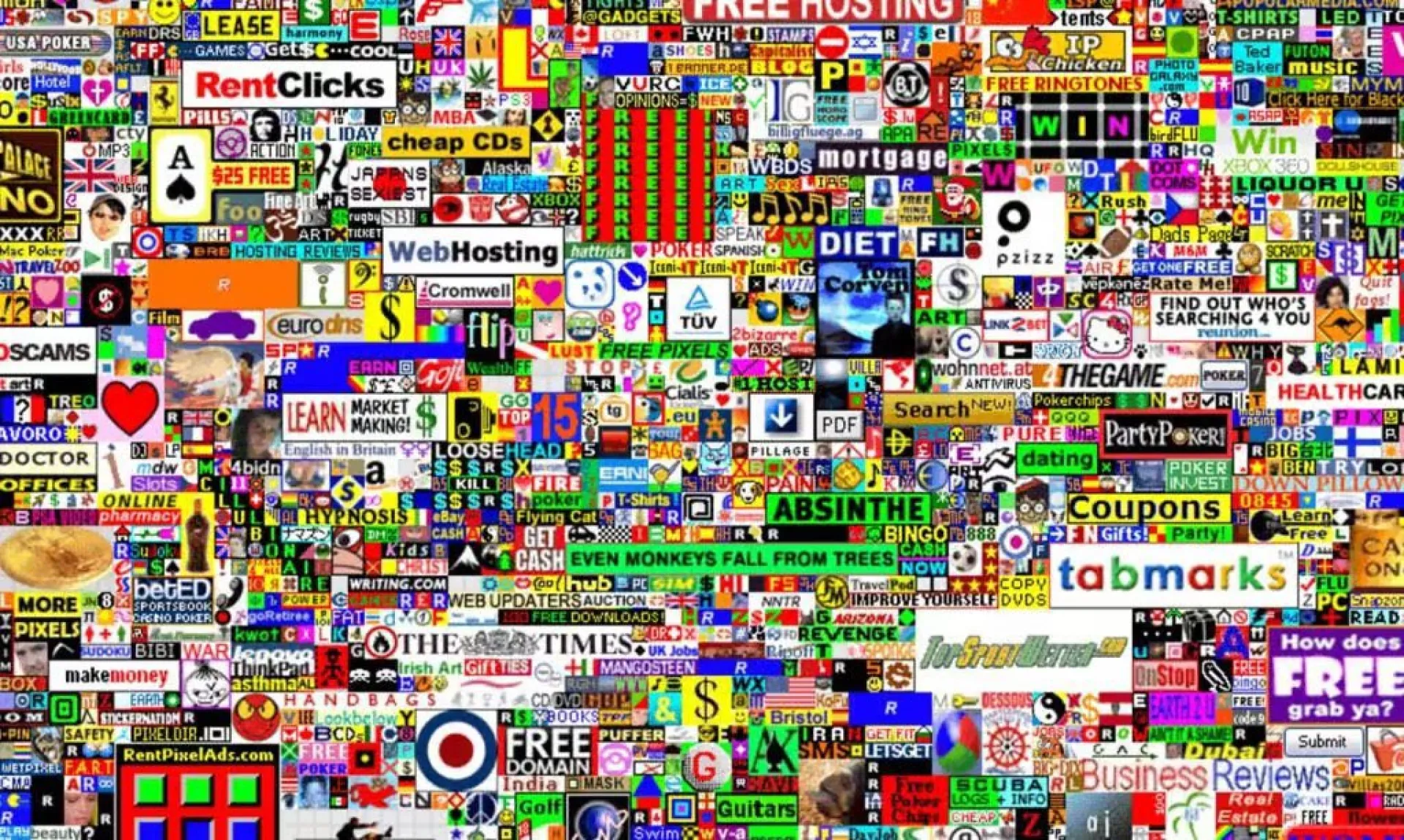
A few months ago, I decided to get started on Reddit—only to get suspended 6 times.
- • First try: Suspended for just commenting.
- • Second try: Suspended again for posting.
- • Third try: Earned 8 karma… then suspended.
This kept happening six times. But on my seventh attempt, I finally made it—no suspension and 30 karma!
- Now, I have:
- • 450+ karma
- • A viral post with 510K+ views (40 DMs!)
That’s when I realized: Reddit is confusing for many people. So, I built MediaFast to help others grow safely — not just on Reddit, but also on X and LinkedIn.
Today, I’ve built an audience of 11,000+ followers on LinkedIn and 2,000+ on X - all by posting consistently and learning what works on each platform.
Indie hackers: Build a SaaS around YOUR problem. 🚀
BloodTrack helps users effortlessly manage their bloodwork by providing AI-driven insights, personalized health trends, and easy-to-understand analytics. Whether you’re optimizing health, managing TRT, or staying on top of your medical journey, BloodTrack makes blood test results meaningful and actionable.

 $3.0k/mo
$3.0k/mo
Let me introduce you to Groop, a product I've built out of pure frustration. Every time I wanted to meet with friends or plan a holiday it was a hassle of constant back-and-forth messaging to check who was available when.
That's why I created Groop, a simple and free solution. It works like this
- Go to groop.cc
- Create a Groop (Eg. summer holiday 2025)
- Send the link to friends
- Everyone can select available dates on a calendar
- The dates when everyone is available are highlighted in green
It doesn't get more simpler than this. No account creation required. No more back-and-forth-messaging.
Check it out: groop.cc
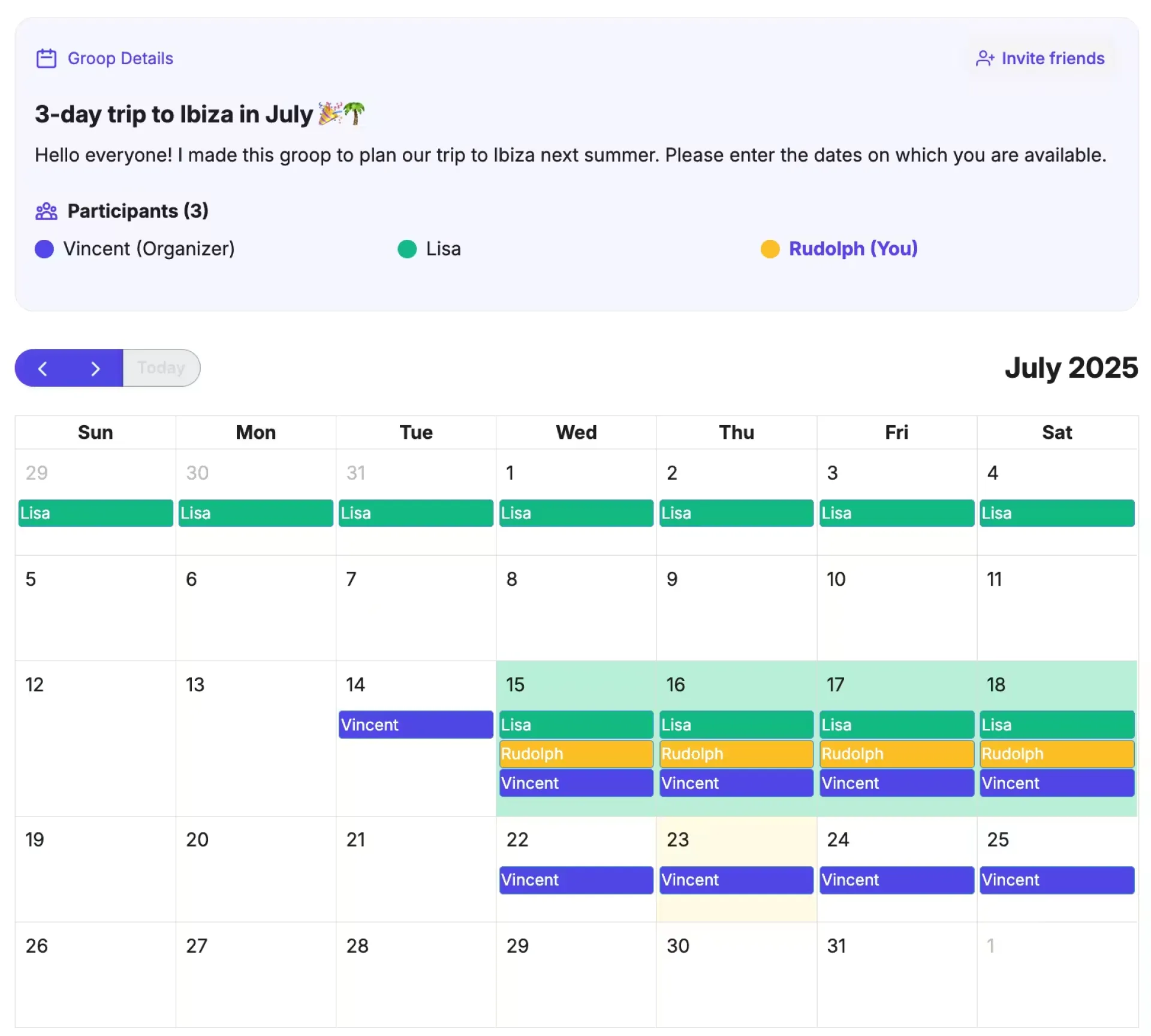
I'll start by saying this isn't a promo post. I'm not affiliated with this startup in any way.
There comes a time in the life of a founder when they must charge users. The staple service used for this is Stripe.
But what happens when Stripe isn't supported in your region? You look for alternatives!
I spent the better part of the last four weeks, checking out Stripe alternatives, some of which were great, and some, not so much.
After much deliberation, I've come to announce the best ever Stripe alternative (IMO); Dodo Payments.
It's easy to use, has great UI/UX, and you can set it up in less than 3 days, with zero to minimum hassles.
It's honestly been a breeze.
Hi,
I just got accepted into an accelerator where I have to build a mobile app in 45 days for a school project.
Recommend any app, webapp, IDE that I can use to get a crazy good MVP in a very short period of time (I also plan to put in not less than 20 hrs a week into this project).
So, lay your recs in the comments, thank youuuuuuuu.
Hey folks!
After spending way too much time working 9-5, last year I've decided to branch on my own and launch my own web agency. Currently it's only me, but I am doing okay, since I have very strict working policies (limit number of customers, don't take every project, have a price, etc.)
It's been a very fun ride, the only thing I'd wish I do differently is to invest in better marketing, don't accept so many NDA-bound gigs (for some reason, companies are really afraid people will know they use consultants. Who cares?) and got a different name. It's really hard to pronounce for some :)
Long story short, if you need a website that isn't just another WordPress with customizable theme, but something handcrafted and handcoded, I'm your guy!

 $3.0k/mo
$3.0k/mo
Made a typo or need to update your product logo? It's now possible to edit your product on Huzzler. You can do so using the "Edit Product" button at the bottom of your product page.
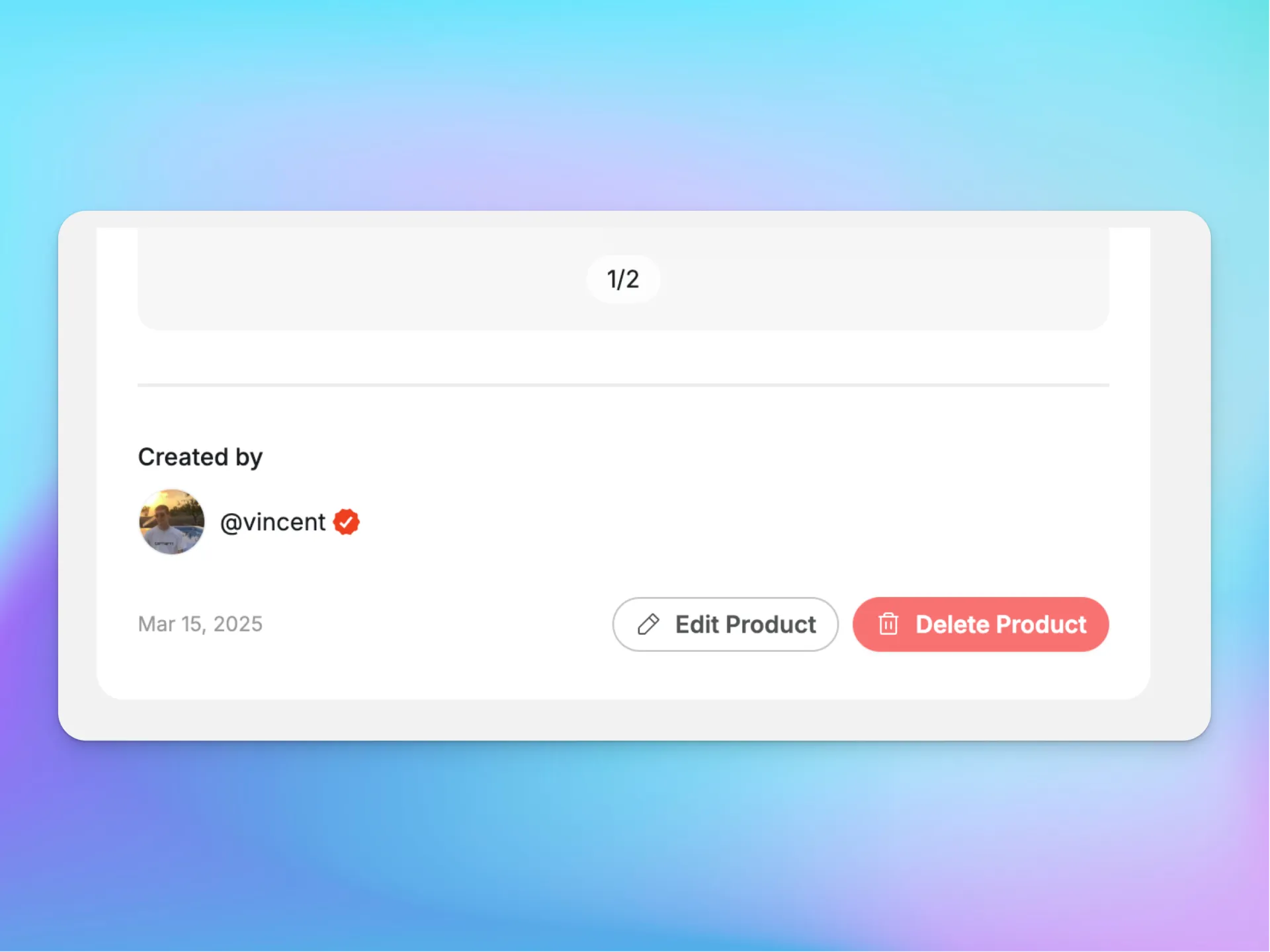
You clock out, you’re exhausted, and yet you still want to work on your own thing.
Maybe it’s a startup, a product, a course, whatever.
But most side projects fade out after the initial hype.
People get tired. Life gets in the way. Consistency fades.
So for those of you still doing the 9–5 (or worse, shift work):
How do you actually make progress without burning out or losing motivation?
What habits, mindset shifts, or setups helped you stick with it long enough to see results?
Would love to hear what’s actually worked for people here.
 $3.0k/mo
$3.0k/mo
Hey everyone! I'm introducing "Tool Tuesday" 😁 This is our dedicated weekly thread to share, discover, and discuss the amazing tools, apps, and services that can help us build, manage, and grow our ventures.
To get the ball rolling:
- What's one tool you've recently discovered that you're excited about?
- What's your "can't live without" tool?
- Are you looking for a tool to solve a specific problem? Ask the community for recommendations!

Here is a good sidehustle. You Hostnplay games with your friends or followers. Earn money whether your gamehost, player for hire, or player.
Gamehost: get paid for hosting games
Player for hire: gamehosts pay you to help find them players.
Players: build a community forum, where gamers can post their gameplay, games and anything related to gaming.
With the community forum if you are building a game, you can also build a community based on that game. You can build a subscription based community to help you financially so you focus building your game.
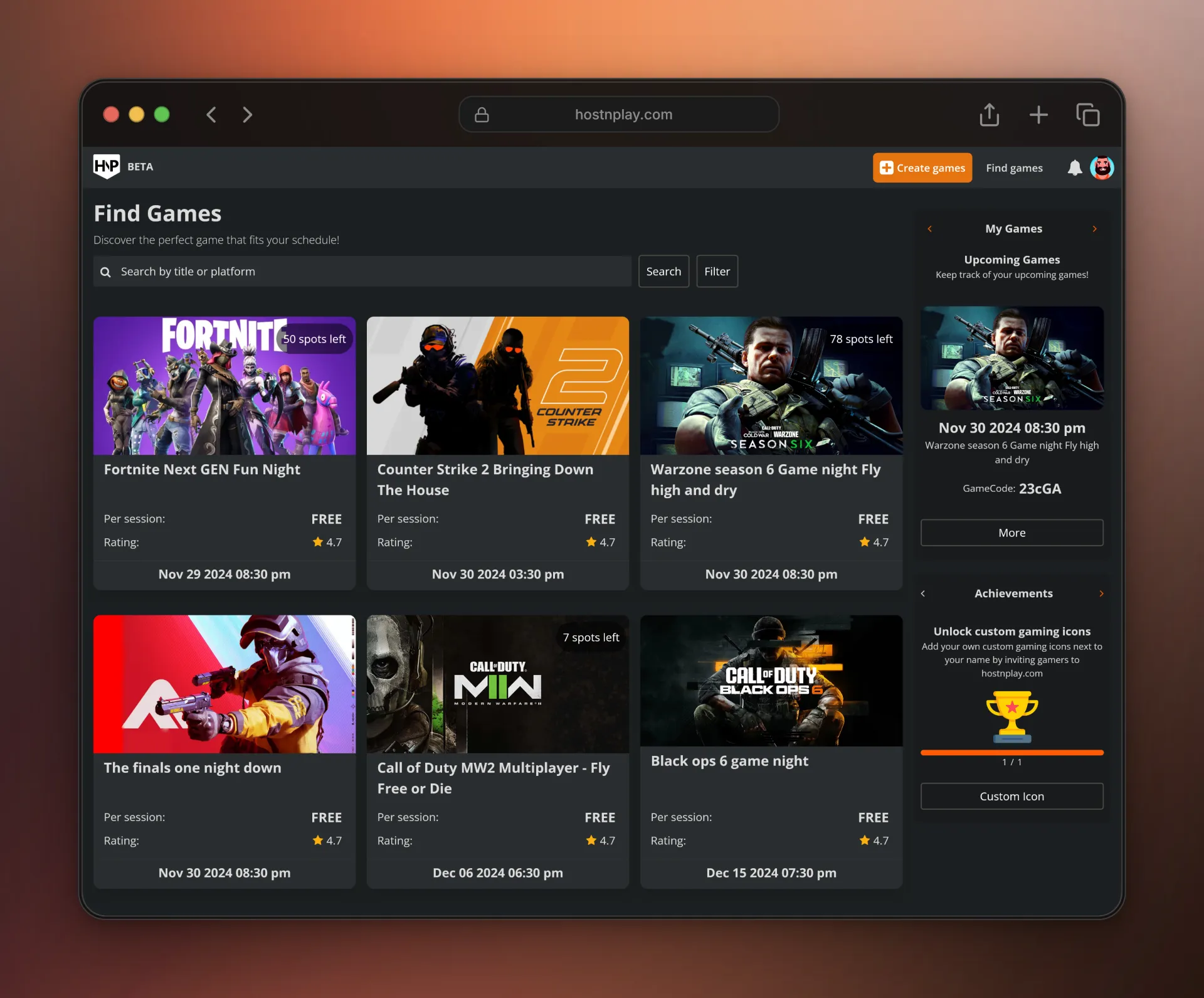
 $3.0k/mo
$3.0k/mo
Hey everyone 👋 For those interested, we've added new advertising options ranging from 1,659 up to 7,458 weekly impressions.
Only until April 30th , we're doing a sale were you get 25 bonus ad credits per 100 credits purchased️
Advertising options: huzzler.so/advertise/options-pricing
Upcoming features for Huzzler
Now that the development on the advertising system is done, we're focusing on making Huzzler the best platform for founders. Here is a list of a couple of the planned features we have:
- Automatically add your product to "alternative to" so people can find your products through SEO
- Be able to save / bookmark valuable posts in folders
- Accountability system where you can define goals and celebrate milestones with the community weekly (you will be held accountable by the community) 😉
- A problem/solution directory where users can submit real world problems they have. This will provide Huzzler users with a list of already validated product ideas. You'll also be able to notify the user who posted the problem when your app is ready, that way you already have a paying customer ready.
- Gamification: have a level and xp. Increase your level by contributing in the community
- Referral system: gain advertising credits by referring people to Huzzler
- OAuth, login with Google
- Embeddable badges for the launch Arena
- Be able to link a product with a showcase
- Better filtering / sorting in product pages (filter by category, sort by date,..)
- Coming soon tab: all projects that are soon to be relelased
- Previous launch arena winners pages
- .... and many more features
Let me know if you'd like to see other features as well 😁
Thanks for reading guys!
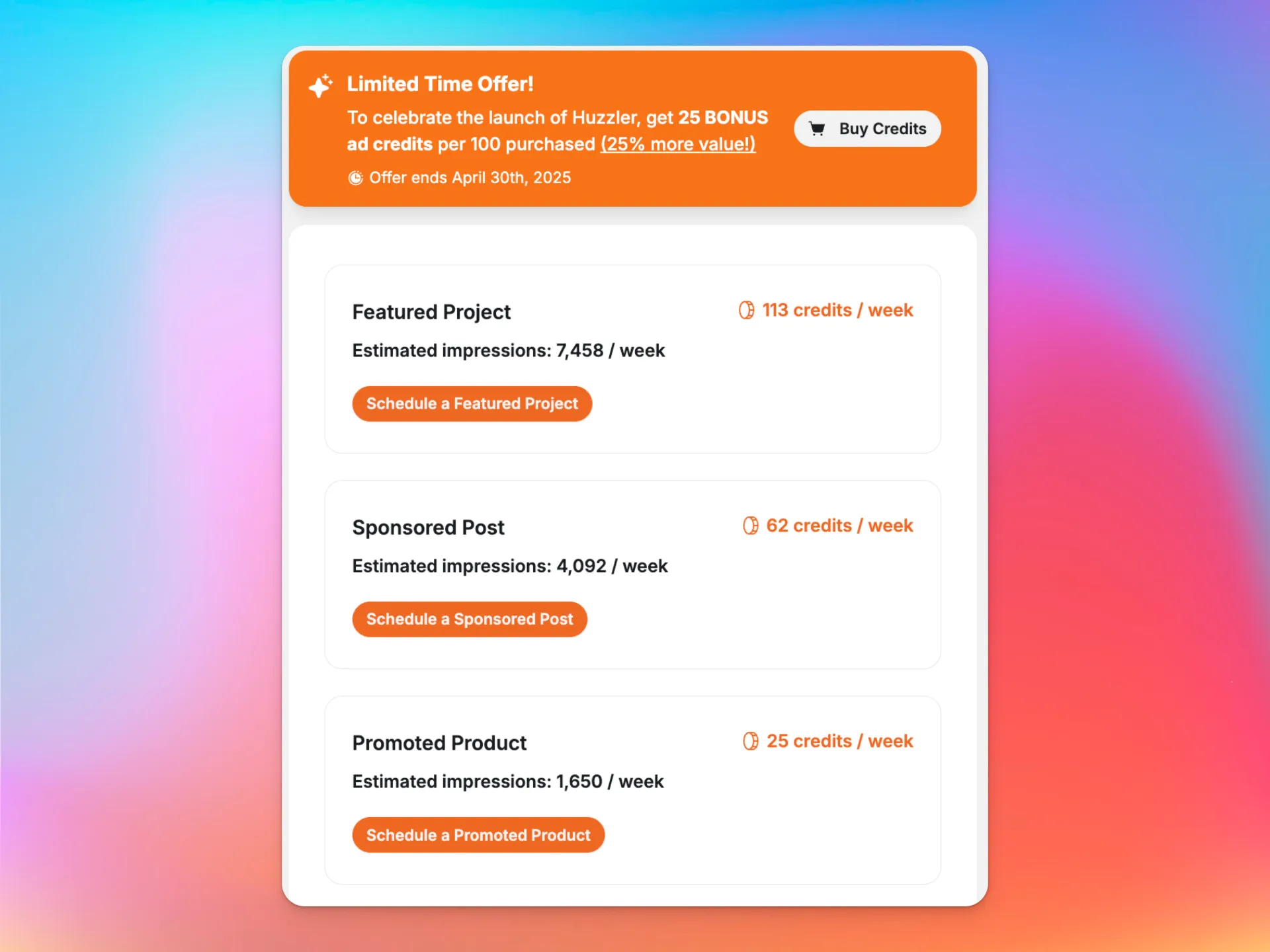
i listed the most underrated high potential ai business ideas for 2025:
1. ai-powered digital twins - saas platforms that create digital replicas of physical assets for simulation, monitoring, and optimization purposes.
2. ai automation for large enterprises - solutions that help big businesses implement ai to streamline processes, improve efficiency, and reduce headcount, starting from niche applications.
3. ai shopping assistant - tools that personalize online shopping experiences by analyzing user behavior, preferences, and trends to increase engagement and sales for retailers.
4. fintech innovation for the next decade - research and develop ai-driven fintech solutions to capitalize on emerging trends and opportunities in financial technology.
5. ai-based financial forecasting for startups - tools using machine learning to provide accurate financial forecasts and scenario planning for early-stage startups.
6. ai-assisted worker job board - a platform connecting businesses in wealthy nations with ai-assisted workers in emerging markets, enabling cost-effective outsourcing.
7. ai-assisted employee board - a job board matching employers with candidates based on genuine skills, interests, and contributions for optimal hiring.
8. ai co-founders/business advisors - ai-driven virtual advisors tailored for specific needs such as business strategy, marketing, seo, and financial management.
9. ai as a friend/companion - ai-powered applications designed to address loneliness by acting as virtual friends, girlfriends, teachers, or companions.
10. ai-powered dating apps - platforms where users, especially women, can specify exactly what they’re looking for and initiate conversations with selected matches.
11. ai-driven market research - platforms that utilize ai to gather, analyze, and interpret market data for strategic business decisions.
12. subscription-based market research reports - provide in-depth market research reports and industry analyses on a subscription basis for businesses and investors.
13. high-stakes forecasting platform - saas leveraging ai and simulations for demand forecasting in industries like energy, agriculture, and logistics, reducing operational risks and costs.
14. ai-driven content creation and management - a saas tool that generates, curates, and manages digital content, aiding marketers, publishers, and creators in producing high-quality material efficiently.
15. ai for entertainment - platforms that curate high-quality social media content based on user preferences, enhancing entertainment experiences.
16. ai-driven sales platforms - tools using ai to optimize sales processes, lead scoring, and customer relationship management (crm).
17. ai-driven marketing optimization - a saas platform leveraging ai to autonomously manage and optimize all aspects of digital marketing campaigns, including content creation, real-time performance monitoring, predictive targeting, budget optimization, and multichannel campaign management.
18. traction channel testing app - an ai-powered app that helps businesses test and identify the most effective marketing and growth channels for their products or services.
19. personalized marketing platforms - ai-driven platforms that create individualized marketing strategies based on customer behavior, preferences, and trends.
20. precision marketing for b2b - saas using ai to create highly targeted campaigns for b2b companies based on behavioral data, enabling personalization at scale.
21. ai-driven content personalization for creators - tools that suggest content ideas to creators (videos, blogs, social media) based on audience preferences and behavior to enhance engagement.
22. ai authentic personal brand creator - platforms that help individuals create authentic brands, providing them with tailored content ideas and strategies to build their personal brand.
